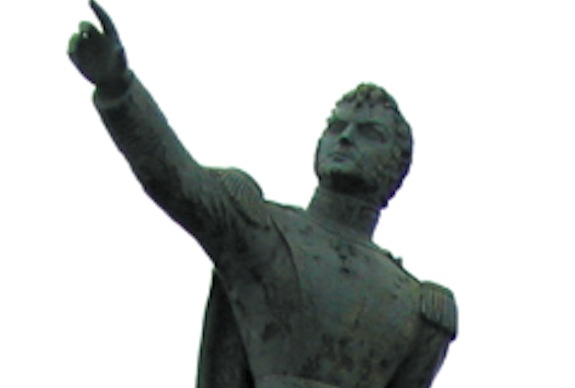Chile’s redheaded revolutionary has finally been returned to the people whom he struggled so fiercely to free. On March 9, the remains of Bernardo O’Higgins, the Irish-South American liberator, were returned to the location in downtown Santiago where they lay until they were removed in 1973 by the military dictator General Augusto Pinochet.
In an emotional ceremony, reported on by The New York Times, President Ricardo Largos said the return of Bernardo O’Higgins to the people was “Chile re-encountering its democratic values and traditions.” It was one of the last acts of Largos, who ended his six-year term two days later, one he hoped would begin to heal the wounds and establish “a new relationship between civilians and the military.”
The man who would become known as “The Father of the Nation” was born on August 20, 1778, to Ambrose Bernard O’Higgins, an Irish engineer from County Sligo who eventually became Governor of Chile and Viceroy of Peru, and Isabel Riquelme, a Chilean Creole woman who was not his wife.
Not openly recognized by his father, Bernardo was brought up by foster parents in Chile. He was educated in Lima and England, and traveled to Spain, returning to Chile in 1802 where he became involved in the struggle for independence. In 1817, he led the revolutionary army against the ruling Spanish, winning a decisive victory with the support of General José San Martin on February 16, at the battle of Chacabuco.
O’Higgins went on to become the first leader of the independent Chile, a position he held for six years. During his rule he implemented improvements within the military, founding the Escuela Militar (Military Academy) as well as organizing the Chilean Regular Army and creating the new Chilean Navy in support of Peru’s struggle for independence. O’Higgins also enacted a wide range of social reforms including the abolition of noble titles, which was not well received by all.
On January 28, 1823, O’Higgins was deposed in a coup and driven into exile with his mother, son, and sister, to Lima, Peru where he was to spend the remainder of his life, dying in 1842. His remains were repatriated to Chile in 1869 and rested in downtown Santiago until Pinochet placed them in the “Altar de la Patria,” which he closed to the public after numerous protest attempts to extinguish its eternal flame.
Pinochet, who ruled Chile from 1973 to 1990, was obsessed with O’Higgins. He gave himself the title of Captain General, a title used by O’Higgins. After Pinochet’s rule, the title was retired in reverence to O’Higgins. It is also believed that Pinochet had in his possession Bernardo O’Higgins’ swords, which were taken from the National Museum during the 1973 military coup.
Alfredo Jocelyn-Holt, historian, described the re-interment of O’Higgins to The New York Times as an important move for Chile, because “There is an obsession in this country with burials, disinterments and reburials. We still have our unburied disappeared from the Pinochet years. It is a very morbid thing, deeply psychological, born of problems that have not been resolved.”


Leave a Reply